SEARCH


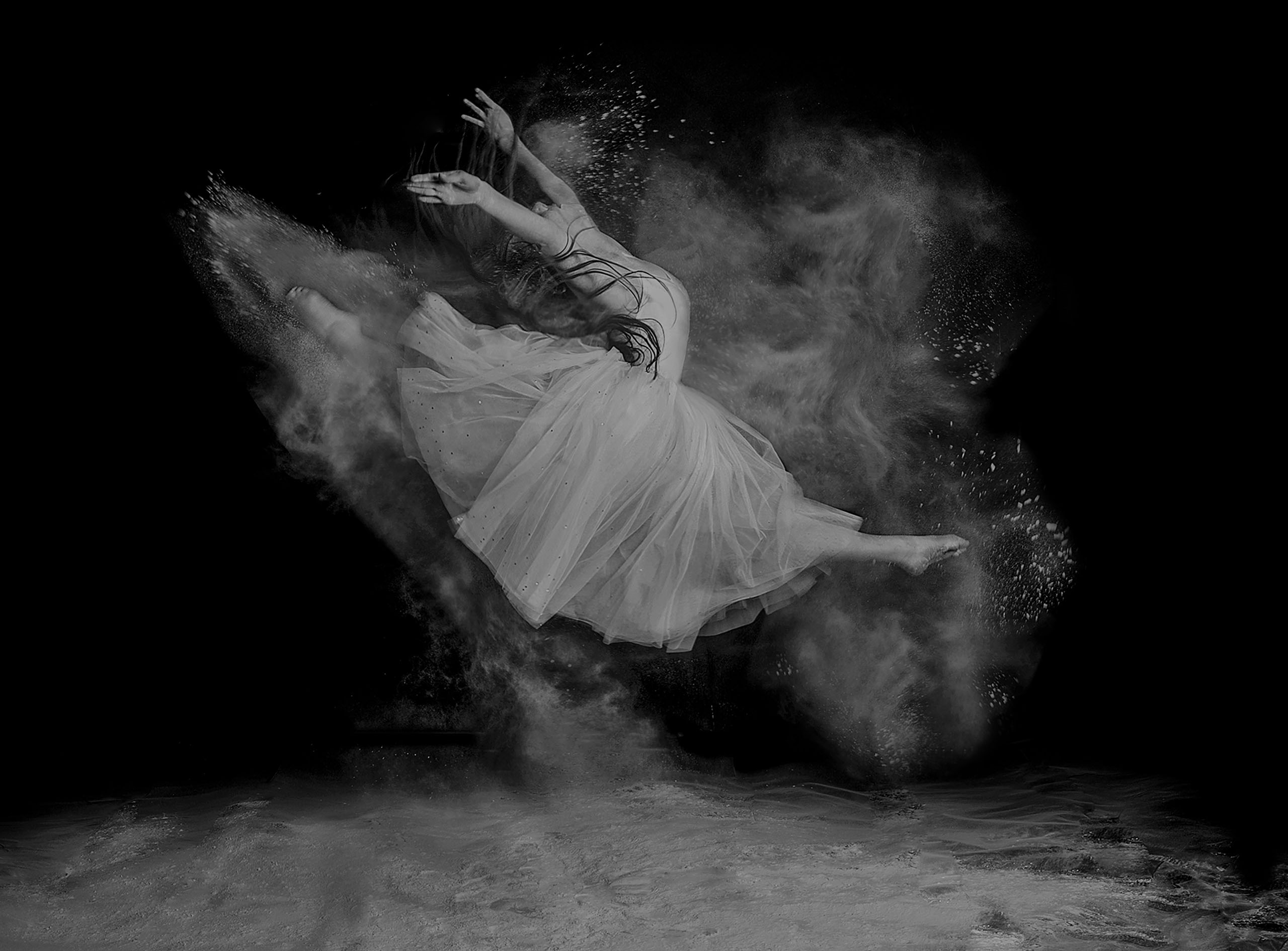
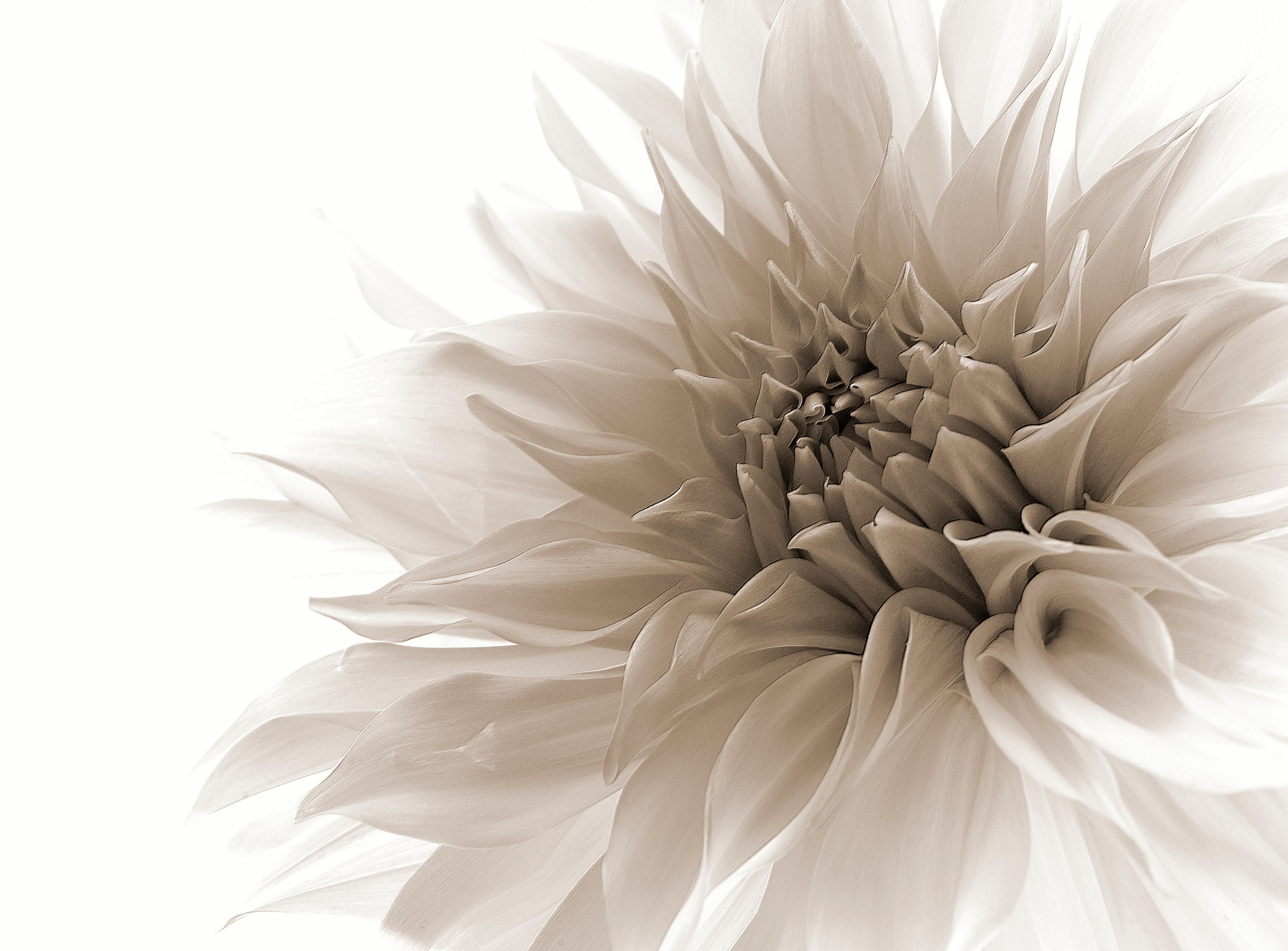
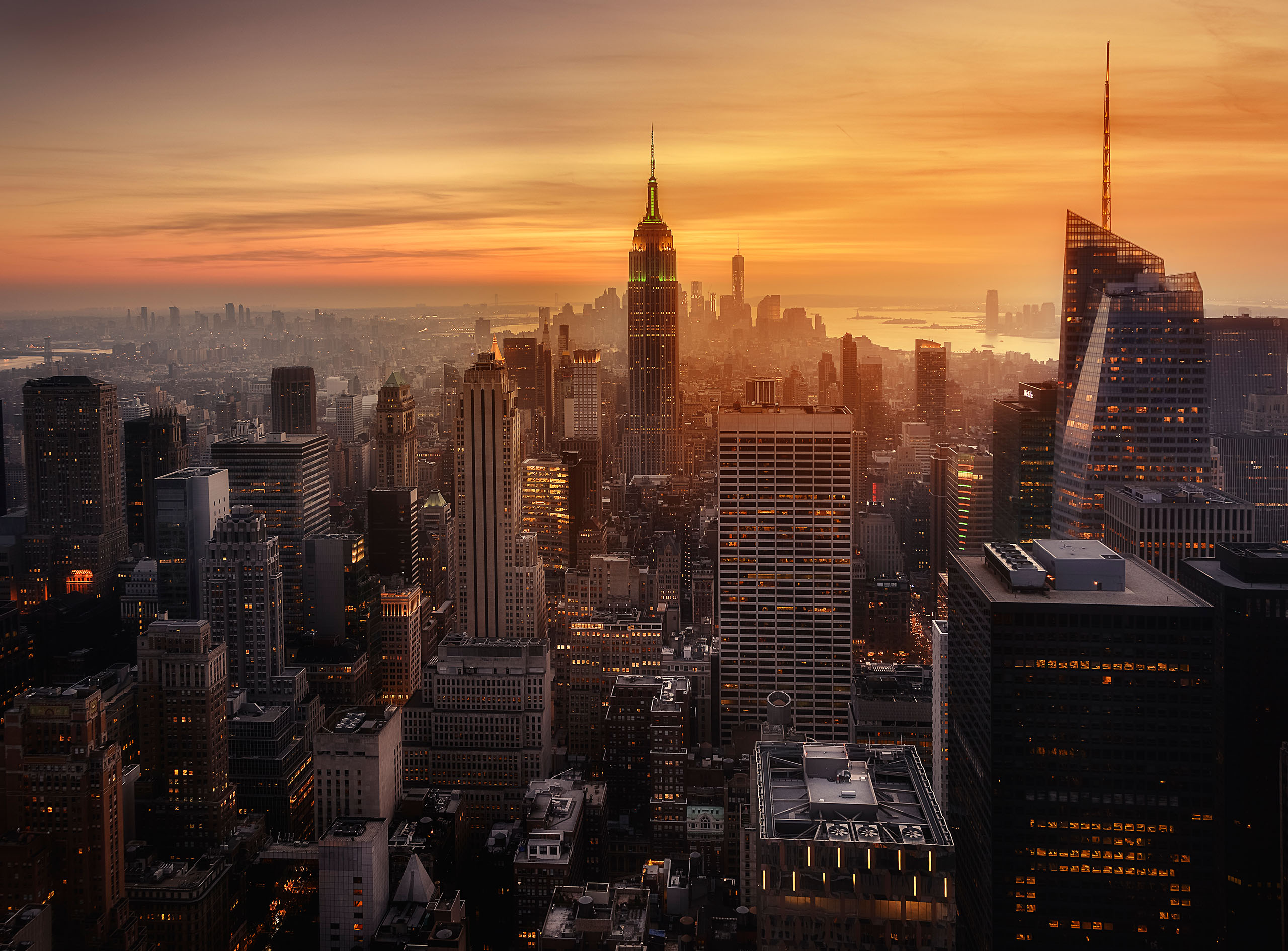
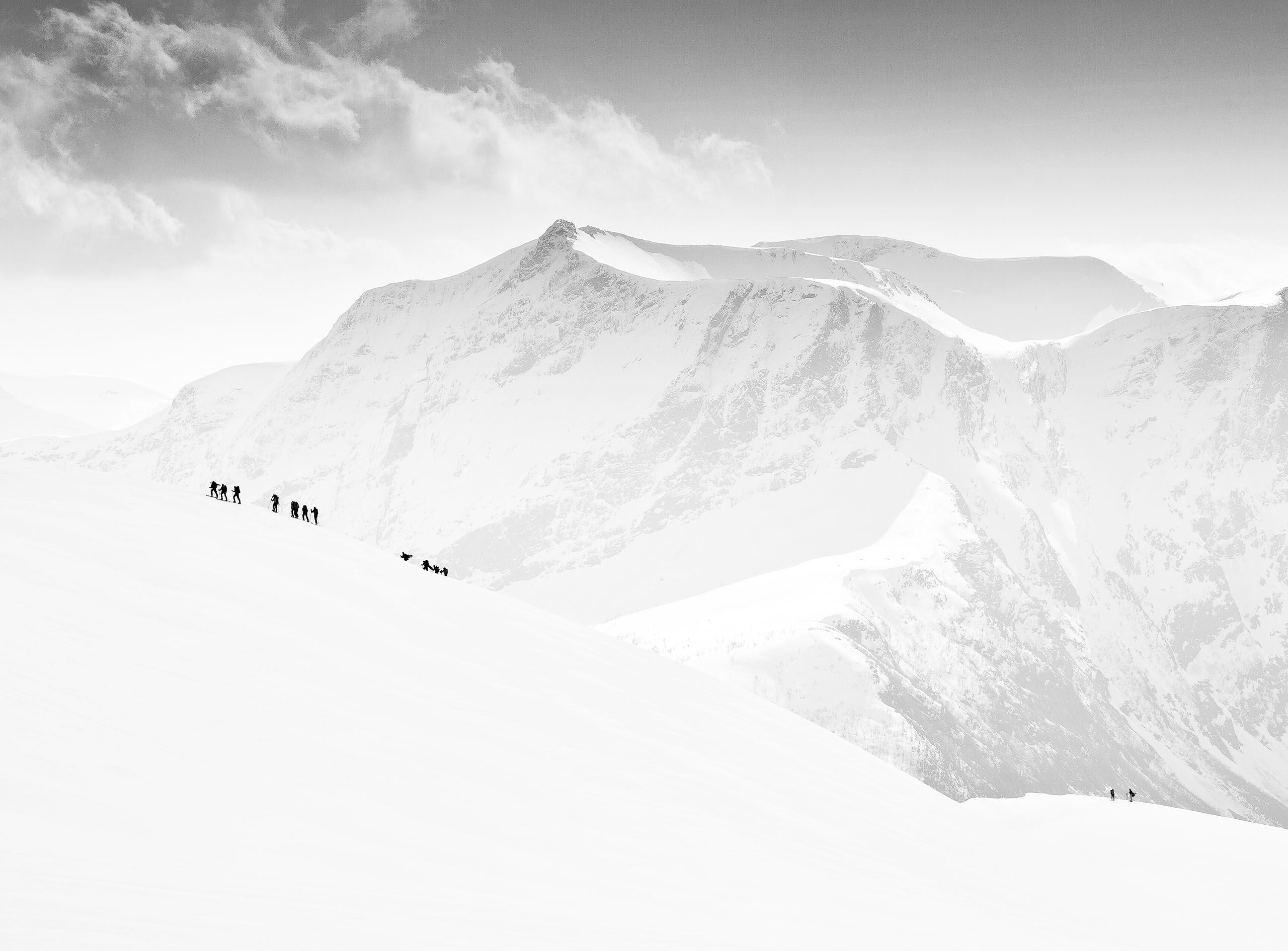
|
|
|
|


by Editor Lourens Durand
Edited and published by Yvette Depaepe, the 19th of December 2025
‘The color of my music’ by Lisdiyanto Suhardjo
One of the most challenging things to capture in a single image is energy. It involves using light, emotion, movement, dynamics, depth, colour and excitement in one space to create a powerful photograph.
Fortunately, there are many tricks we can use to help us achieve this goal.
Here are some of them:
MOVEMENT
In art, movement does not only refer to a moving subject, but also implies the movement of the viewer’s eyes when looking at the picture. The viewer's eyes move from the leading lines and converging lines to the shapes, balance, light and shade, before settling on the subject and wondering where it is moving to, or if it is moving at all.
The actual movement of a subject in a photograph can be implied by:
· Portraying athletes as they are about to pounce into action, showing their stances, as well as their hands, feet and arms.
· Panning with the subject to make it appear stationary against a blurred background.
· Not panning: creating a static foreground or background with a blurred, moving subject.
· Using a slow shutter speed to create a blurred effect.
· When photographing moving subjects, such as cars at a racetrack or animals in the wild, the background can often be distracting. In these cases, it may be helpful to select a suitable background and set up your camera here, focusing on a small area. Wait for the action to come into the frame before shooting.
DIAGONALS AND LEADING LINES
Diagonals can be used to capture drama. For example, in the well-known photograph of men raising the flagpole, the men and the flagpole are positioned diagonally to convey the drama of the occasion.
Converging diagonal lines, on the other hand, create a sense of depth.
Leading lines can also draw the viewer's attention towards an anticipated scene of action.
HORIZON LINES
While it is generally accepted that the horizon line should be straight and aligned with one of the thirds lines, placing it high or low can create a sense of drama.
NEGATIVE SPACE
In wildlife photography, for example, leaving space for the subject to move into can imply a sense of movement or space. Even in some portraits, if the subject appears to be looking at something outside the frame, leave some space for them to look through. In any case, never position a subject facing directly towards a border.
CREATING DEPTH
How can you create the illusion of depth in a photograph presented on a flat surface?
We have already explored some of the techniques, but let's review the tricks that can be employed.
· Use framing to create more than one plane.
· Remember that the space between objects (such as lamp poles or a row of trees) diminishes with distance, as does their size, so include these where you can.
· Converging lines, such as roads, railway tracks and staircases, are an effective way of creating a sense of depth and leading lines.
· Use colour perspective. It is a well-known phenomenon that warm colours (such as red) appear to come towards the viewer, while cooler colours (such as green and blue) appear to recede. For example, a red boat on a lake appears closer to the viewer than a blue boat.
· Of course, a shallow depth of field (bokeh) is also useful for creating depth.
CAPTURE THE MOMENT
Try capturing the moment immediately before an action, for example just before a discus leaves an athlete’s hand.
INDICATIONS OF ELECTRICITY
Other indicators can be used, such as haloes (which are made on purpose), pictures of electricity itself (e.g. generation, power stations and lightning) are all OK.
Although all of these tricks help to create impact, it is important to stress that they are only tools. It is up to the photographer to use them in unique ways and harness them to express the illusion of energy. Photographers need to see, feel and experience the force of energy while taking a photo, which will make viewers feel it too.
Please enjoy the selection of energetic photographs from 1X photographers.
‘Playing with splash’ by Angela Muliani Hartojo
‘Storm in San Francisco Bay' by Michael Delman
StormRoad’ by Marcel Egger
‘The garden hose’ by Stephanie Kleimann
'Break the waves’ by Jennifer Lu
‘The Ansai Waist Drum Dance’ by BJ Yang
‘Windmill de Adriaan’ by Larry Deng APA
“Pas de deux” by Frank Ma
‘Leaves’ by Vanya Baramova
‘Zinga & Sara’ by Claudio Piccoli
‘Freedom’ by Christophe Kiciak
‘Mystical Rail’ by Tristan Shu
‘Pure Grit’ by Irene Wu
‘Dynamic trotting race’ by Erhard Batzdorf
‘Nostalgia’ by Rana Jabeen
‘too late’ by Hilde Ghesquiere
‘Sequence of the gallop’ by Milan Malovrh
‘Flow of Dance’ by Rob Li
‘The performer’ by Marc Apers
‘Aura…’ by Katerina Lomonosov
‘black and white’ by Vedran Vidak
‘Breakthrough’ by James Cai
‘Eagle family’ by Tao Huang
 | Write |
 | Dazhi Cen PRO Real energy!! |
 | Wanghan Li PRO Great! |
 | Vladimir Funtak PRO Quite a few upstanding works! |
 | Irene Wu PRO Really enjoyed this collection. Thanks to Lourens and Yvette! |
 | Larry Deng APA PRO Great collections and beautiful works. Thanks Lourens and Yvette for your hard work. +++ |
 | Frank Bruynseraede PRO Great series ! |
 | Rob Li CREW Very creative collection and thoughts! Thank you! |
 | Stéphane Pecqueux magnifiques !!!! |
by Yvette Depaepe
Published the 17th of December 2025
'Low key Photography'
Low-key photography is a style that emphasizes dark tones and shadows to create a dramatic, mysterious, and high-contrast image. It involves using minimal light to illuminate specific areas, leaving the rest in deep shadow. This technique is often used to evoke mood, highlight textures, and draw attention to the subject's details.
The submissions were numerous and outstanding ...
The winners with the most votes are:
1st place : Emma Zhao
2nd place : Hadi Malijani
3rd place : Rolf Endermann
Congratulations to the winners and honourable mentions.
Thanks to all the participants in the contest 'Low key Photography'
The currently running theme is 'Energy'
To represent energy in photographs, you can utilize techniques that create a sense of movement, dynamism, and emotional resonance. This can be achieved through various methods, including motion blur, color palettes, and capturing candid moments that reveal a subject's internal state.
This contest will end on Sunday the 28th of December at midnight.
The sooner you upload your submission the more chance you have to gather the most votes.
If you haven't uploaded your photo yet, click here.
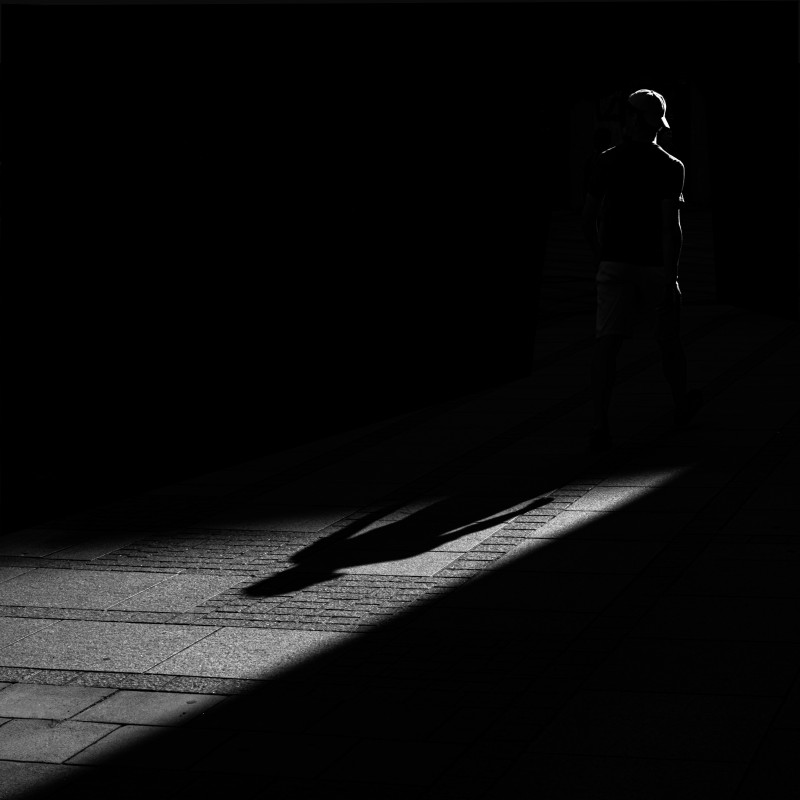 3rd place: Rolf Endermann
3rd place: Rolf Endermann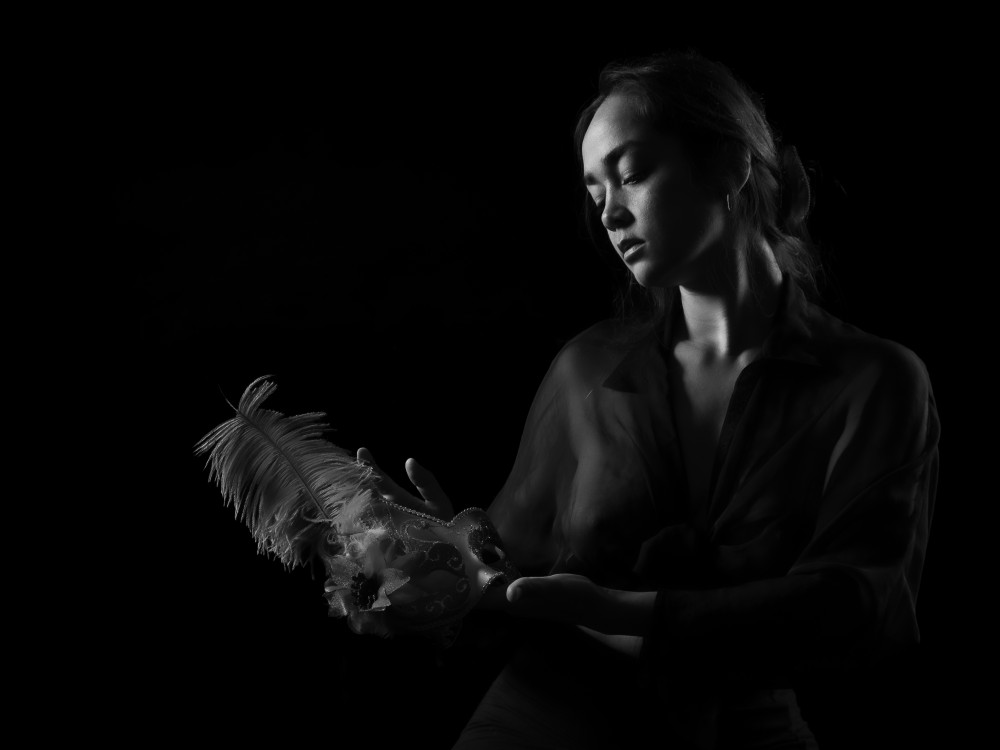 by Thierry Lagandré (Transgressed Light)
by Thierry Lagandré (Transgressed Light)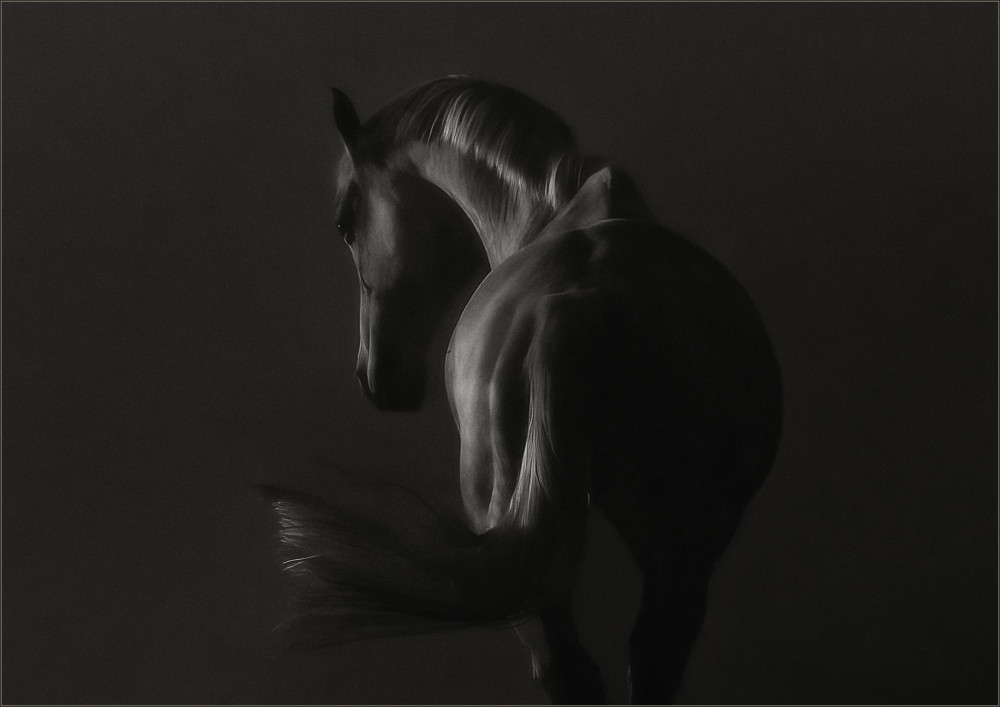 by Allan Wallberg
by Allan Wallberg
 |
 | Yaping Zhang PRO 恭喜各位获奖的摄影师们!优秀杰出作品!太牛了 |
 | Gabriela Pantu PRO Superb, congratulations!!! |
 | Hadi Malijani PRO Thank you very much for all your efforts. |
by Editor Miro Susta (mirosu)
Edited and published by Yvette Depaepe, the 15th of December 2025
This article is part four of a five parts series on Olympic and non-Olympic sports.
The previous articles can be found under the following links:
Summer Olympic Sports-Part 1
Summer Olympic Sports-Part 2
Non-Olympic Sports Part 1 - Summer Outdoor Sports
'Best Team Member' by Molly Fu APA
In previous articles, I haven't explained why I write about sports. The simple answer is that I have been closely involved with both sports and photography throughout my life. In my early years, I was a high-performance athlete who competed in 800- and 1,500-metre races. I then became an ice hockey player in a Swiss club, followed by a passionate alpine and cross-country skier and finally an active golfer. I combined my two passions, working mainly as a photographer at professional golf competitions for Swiss and German golf magazines.
In this article, I am focusing on non-Olympic winter and non-Olympic indoor sports. All photos originate from 1x Photo Gallery.
WINTER SPORTS
Long distance extreme ski races…
... they are very hard and incredibly challenging, but for many, they are also the most spectacular cross-country skiing races.
At 220 kilometres, Nordenskiöldsloppet is the world's longest cross-country skiing race. It takes you through the forests and frozen lakes of Swedish Lapland. The course, which is located north of the Arctic Circle, involves ascending and descending a total of about 1,500 metres.
The Arctic Circle Race in Greenland is also designed for hardcore cross-country skiers. With temperatures sometimes dropping to minus 20 degrees Celsius, icy winds, challenging climbs and rapid descents, the technical demands on participants are high. The race covers a total distance of 160 kilometres, with two overnight stays in unheated bivouac tents.
‘Bivouac at Bouquetins’ by Karol Nienartowicz
Extreme downhill skiing…
… refers to long, challenging courses such as the Inferno, the world's oldest and longest amateur downhill ski race, which takes place every January in the Swiss winter resort of Mürren. The course is 14.9 km long and involves a 1,990-metre vertical drop.
‘Ski is life’ by Sandi Bertoncelj
‘Silent Moments before Descent’ by Sandi Bertoncelj
Freeride skiing, hiking and racing…
… combines elements of traditional racing with freeride skiing. Athletes ski on natural, ungroomed terrain and are judged on line choice, fluidity, control, jumps and time. While the hardest ski freeride competition is subjective, the Freeride World Tour (FWT) is widely regarded as the world's premier event, with its finals held at the legendary Xtreme Verbier in Switzerland.
Verbier’s Bec des Rosses is synonymous with extreme freeriding. At 3,223 metres high with a 600-metre vertical drop and 43-degree slopes, it is the steepest and most complex terrain on the FWT circuit. Riders must navigate a maze of narrow couloirs, exposed ridges and huge cliffs, selecting lines that blend technical precision with progressive freestyle moves.
‘Higher’ by Tristan Shu
The Red Bull Oslavia Hike & Ride is an annual freeride skiing competition in Romania that combines hiking up a mountain and skiing down it.
‘Red Bull OSlea Hiride 2019’ by ATTILA SZABO
Speed skiing...
… considered a simple yet dangerous sport, it involves individual racers in aerodynamic suits speeding down steep slopes and pushing the speedometer to its limits. In 2016, world records were set for both men and women, with speeds exceeding 240 km/h (the current men's world record stands at 255.5 km/h). Speed skiing continues to attract passionate and dedicated adventurers to the annual World Cup.
However, the speed skiing competition was tragically overshadowed by the fatal training accident of Nicolas Bochatay at the 1992 Albertville Olympics, and the IOC has not considered it since.
‘One of those days’ by Jakob Sanne
Ski mountaineering…
… competitive ski mountaineering (Skimo) originated in Switzerland, evolving from the military team competition of the Patrouille des Glaciers ski mountaineering race. This race, which takes place from Zermatt to Verbier, was first held in 1943 and has grown in popularity over time. Military patrols competed against each other to complete a specified mountain route on skis as quickly as possible. In fact, the patrol was even part of the 1924 Olympic Games in Chamonix.
This sport's roots go back to the early days of alpine skiing, when it was common practice to make the ascent under your own steam in the absence of ski lifts or cable cars.
‘Step by step’ by Marcel Rebro
‘Windy mountain’ by Sandi Bertoncelj
Winter Horse Racing…
…which takes place in the Chinese town of Kanas during the traditional yearly Ice and Snow Festival. The races are sometimes held in extremely cold temperatures and feature performances and events such as chases, as well as traditional competitions.
‘Winter Horse Race’ by BJ Yang
Sled dog racing...
... is a winter sport that is particularly popular in the Arctic regions of the United States (Alaska), Canada, Russia, Greenland, Norway, Finland and Sweden. It involves teams of sled dogs pulling a sled with the driver, or 'musher', standing on the runners in a timed competition.
Sprint races cover relatively short distances of generally up to 30 miles per day, mid-distance races cover 30 to 300 miles in total, and long-distance races cover between 300 and 1,000 miles.
‘A snowy day’ by Larry Deng APA
‘Running as One’ by Steven Zhou
Reindeer races…
… are colourful and speedy competitions that form an essential part of northern reindeer culture. They have been held in Finland's Lapland since 1932 and remain a popular winter sport there. Today, reindeer races are also organised and regulated in Norway, the USA (Alaska) and Russia.
‘Faster than wind’ by Andrey Snegirev
The White Turf…
… takes place in St. Moritz, Switzerland, and is one of the most famous horse races in the world. For 117 years, the frozen Lake St. Moritz has served as a racecourse and the social hub of the Engadin Valley, one of the highest inhabited valleys in Europe at over 2,000 metres above sea level. The White Turf is a unique spectacle where horses and jockeys compete not on sand or grass as usual, but on the frozen surface of Lake St. Moritz. For over a century, this traditional horse race has offered a unique experience in the snow over three weekends in February each year.
‘White Turf’ by Ludwig Loch
Winter car rallies…
… are competitions in which drivers race on modified tracks or off-road using special techniques adapted for slippery surfaces. These events take place during the winter months and are primarily designed for 4x4 vehicles. Competitors must master challenging conditions such as driving on snow and ice, using techniques such as smooth braking to grip and control the vehicle. The most famous winter rally is the Rallye Monte Carlo, a modern version of the original 1,070 km Paris-Monte Carlo rally launched in 1911. Held every January, it consists of 14 to 22 stages (300 to 600 km) on challenging winter roads in the French and Italian Alps.
‘Lancia Fulvia’ by ATTILA SZABO
Long-distance ice skating...
It is particularly popular in the Netherlands. The Elfstedentocht race is well known: a historic long-distance speed skating event spanning almost 200 km. Taking place in the northern province of Friesland, it passes through all eleven of the province's historic cities. The race takes place once a year at most, but only if the natural ice along the entire route is at least 15 centimetres thick.
‘Dance of the long knives’ by Dusan Ignac
Winter cross-country cycling races…
… require adapted riding techniques and route planning. This includes reducing speed, braking and steering carefully when cornering, and choosing paths without large amounts of snow or ice. There are two types of winter cross-country cycling race: cyclocross, which takes place during the cold season and involves riding modified road bikes over obstacles such as mud and sand; and alternative winter cycling races. Alternatively, winter cycling races may be held.
‘Take a Ride on the Sunny side’ by Sandi Bertoncelj
Winter sailing regattas...
… examples include the Frostbite Winter Race Series in Jersey and the J/70 Winter Series in Turkey, as well as various other regattas held in locations such as the United States, Italy and Spain. Iceboat racing, a unique form of winter sailing, takes place on frozen lakes when conditions are suitable. The Royal Channel Islands Yacht Club's winter sailing race series in St. Aubin's Bay, Jersey, is also very popular, combining Sunday morning racing with social gatherings at the club.
‘Greenland night’ by Marc Pelissier
SELECTED NON-OLYMPIC INDOOR SPORTS
Bowling...
… although it is not an Olympic sport, bowling is one of the most popular sports in the Special Olympics.
‘Bowling girl’ by Igor Makarov
Snooker and billiards…
… they differ in terms of equipment and rules. Snooker is played on a larger table with smaller balls and narrower pockets, making the game more technically demanding. Additionally, the order in which the balls must be pocketed and the scoring system are fixed in snooker, unlike in other billiards variants, such as 8-ball, where the entire group of balls often must be pocketed.
‘Billiards’ by Juan Luis Duran
‘And all of a Sudden Everything was Calm’ by Alex OBrien
Chess…
… the International Olympic Committee has labelled it a sport and recognises FIDE as an official federation. However, chess is not approved for the Olympics. One reason for this is that chess does not involve physical exertion or athleticism in the same way as traditional Olympic sports.
‘Chess school in Cuba’ by Santos Moreno
‘Chess game’ by Fang Tong
Dance sport...
... is not only an artistic activity, but also encompasses athleticism and artistry. It combines the rigour of sport with the expressiveness of art.
Dance sports include Latin American and standard dances, as well as rock 'n' roll, boogie-woogie, jive and West Coast swing, and modern line dancing. At dance tournaments, couples compete against each other.
‘Carmen’ by Eleonora Abbagnato by Flavio Bertazzi
Darts...
… the first hurdle would be that it doesn't have a governing body that's recognized by the Olympics.
‘Training with heartbeat’ by Christine von Diepenbroek
Netball…
... is a team sport played on a rectangular court with raised goal rings at each end. Games are played on a rectangular court with raised goal rings at either end. The aim is to score goals from within a defined area. It is similar to basketball, but allows less physical contact between players, such as blocking and screening. Netball has stricter rules regarding physical contact; defensive players must keep a certain distance from the player with the ball.
‘Line’ by Ovi D. Pop
Karate…
… is a martial art involving striking, blocking and kicking. Although it was included in the Tokyo 2020 Olympics, it is not part of the permanent Olympic programme.
'Wake Up!!!' by Marcel Rebro
Mixed martial arts (MMA) …
... is a full-contact combat sport in which a wide variety of techniques and skills from other combat sports can be used in competition. However, the sport's violent nature and lack of a standardised scoring system have so far prevented its inclusion in the Olympics.
‘Fighters’ by Henry Zhao
Some other non-Olympic winter and indoor sports exist, such as bandy, ice hockey, synchronised figure skating, natural track luge, ski orienteering, snow volleyball, 3x3 ice hockey, ice climbing, rope climbing, floorball and indoor football. Unfortunately, there are no corresponding photos in the 1x photo gallery.
‘Skeleton face’ by Markus Hülsbusch
The final article in this series will focus on Olympic winter sports and is expected to be published in early 2026, just before the Winter Olympics begin in Milan and Cortina in February.
 |
 | Yaping Zhang PRO 精彩绝伦的有趣运动作品以及非凡优秀的文章,太棒了! |
 | Jacob (Jian) Xu CREW Fabulous series and wonderful article, Miro and Yvette, nicely done! |
 | Subhajit Das PRO Great series and interesting article. Congratulations! |
 | Miro Susta CREW Thank you very much Subhajit |
 | Que ganas de volver a la montaña. |
 | Miro Susta CREW Muchas gracias Augustín |
 | GAGIK VAGRAMYAN PRO Nice ,Congrats! |
 | Miro Susta CREW Many thanks Gagik |
 | Larry Deng APA PRO Wonderful and inspiring collection of images. Lovely and elegant article, congratulations Miro and Yvette +++ |
 | Miro Susta CREW Thank you very much for your wonderful words of encouragement dear Larry, we appreciate it very much |
 | Jane Lyons CREW This is wonderful, Miro. Beautifully done! |
 | Miro Susta CREW Great thanks dear Jane |
 | Great series ! Thx ! |
 | Miro Susta CREW Thank you very much Frank |
 | Eiji Yamamoto PRO Dear Miro, thank you so much for another very interesting article with dynamic photos following the summer one! Dear Yvette, thank you so much as always! |
 | Miro Susta CREW Many thanks for your wonderful words of praise dear Eiji, we are happy to see that you like it |
by Editor Jane Lyons
Edited and published by Yvette Depaepe, the 12th of December 2026
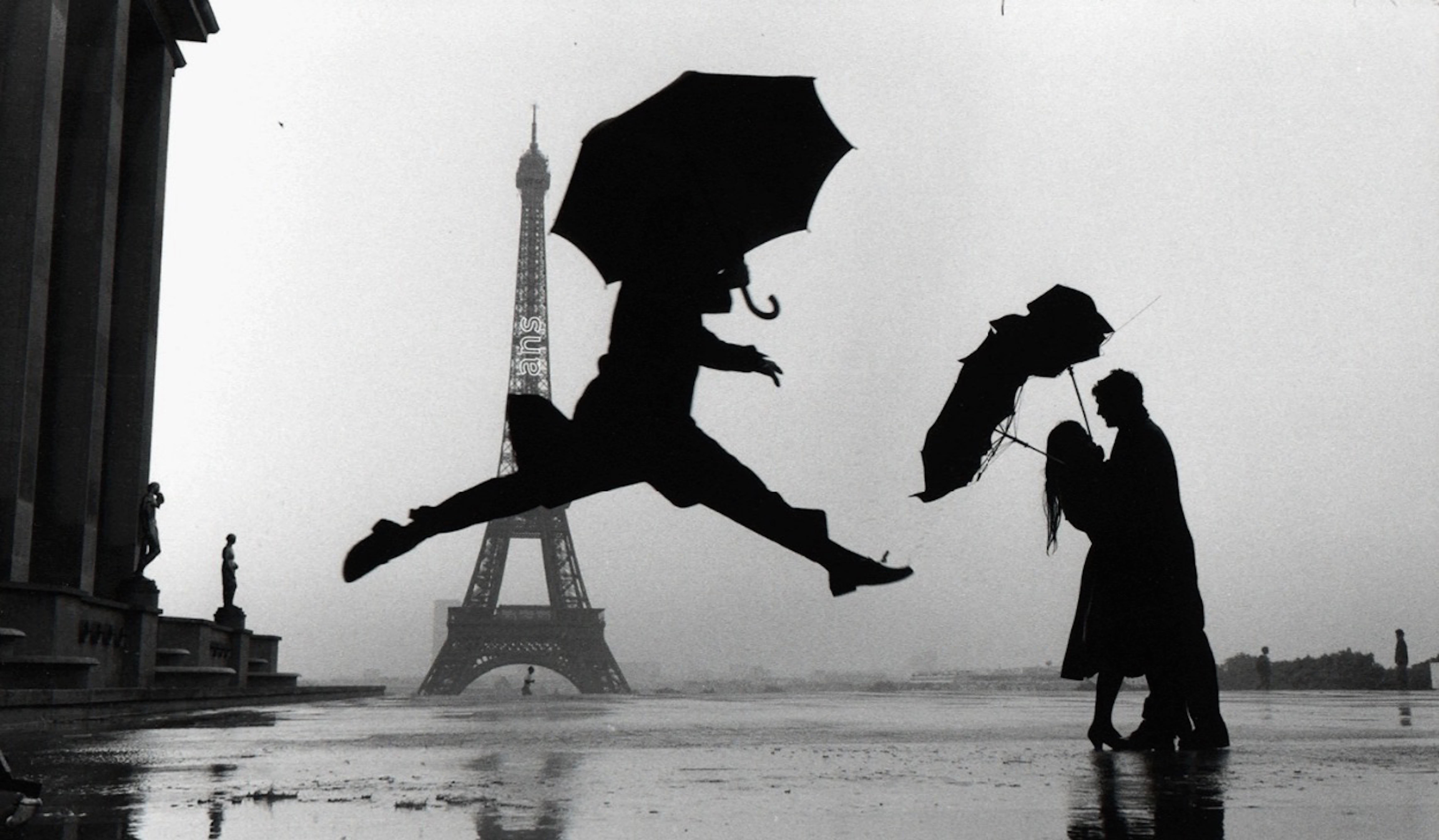
Elliott Erwitt
“Some people feel the rain, others just get wet"
~Bob Marley~
The umbrella is one of the most iconic motifs in photography. Whether photographed candidly or as an orchestrated set-up, umbrellas in art symbolize cultural significance, elegance and protection. The classic umbrella shape is undoubtedly photogenic. It can soften hard lines and become a graphic focal point, or act as a bullseye, directing the viewer’s gaze towards the subject. Regardless of weather, adding an umbrella to a photograph in an artistic way can create an air of mystery, intrigue and energy.
Rain, snow, fog and mist are meteorological phenomena that photographers love, as they create the perfect atmosphere for a dramatic and ethereal photograph. The semi-circular shape of an umbrella is an appealing addition to a variety of storylines.
“Oh Boy” by Pristine Clothes
“Getting Wet 2384” by Karen Celella
“The Road Less Traveled” by Alain Villeneuve
“Darkened Days to Come” by Jay Satriani
“Umbrella” by Kendisan Seruyan
“Right rute” by Milan Malovrh
"Messenger” by Ivan Marlianto
“STOP” by Anette Ohlendorf
The umbrella originated in China in the 1st century, where it was used as both an umbrella and a parasol. The umbrella as we know it today was invented by a Parisian merchant named Jean Marius in 1705. The word 'umbrella' comes from the Latin 'umbra', meaning 'shade' or 'shadow'.
“Crossing” by Ivan Marlianto
“crashing” by Hari Sulistiawan
“winter passengers” by Nicoleta Gabor
“Umbrellas…” by Thierry Dufour
“Mirror, mirror on the wall……………..” by Carlo Ferrara
“No.522” by Adirek M
“Colors of the Mediterranean” by Diana Junakovic
“rainy people out of a bus” by HAN dong hee
“Red Umbrella” by Weiwei
In the Bible, the umbrella is said to symbolize divine protection and grace and fellowship with God. Politically, it can symbolize resistance. It can also be used as a shield against pepper spray and tear gas.
In art, in both painting and in photography, the iconic shape of the umbrella is ubiquitous, often symbolizing togetherness, shelter, elegance, or simply bad weather.
“Enjoy the rain without getting wet” by Yvette Depaepe
“A Man from Kashmir (India)” by Joxe Inazio Kuesta Garmendia
“when everything must come to an end” by Djeff Act
'Umbrella” by Arman Kuzel
by Antonio Grambone
“Stormbringer” by Tetsuya Hashimoto
“Over There it is Raining” by Fernando Correia da Silva
I have not addressed umbrella handles but the wonderful photograph “Flamingo Close Up” by Xavier Ortega, when inverted, comes to mind.
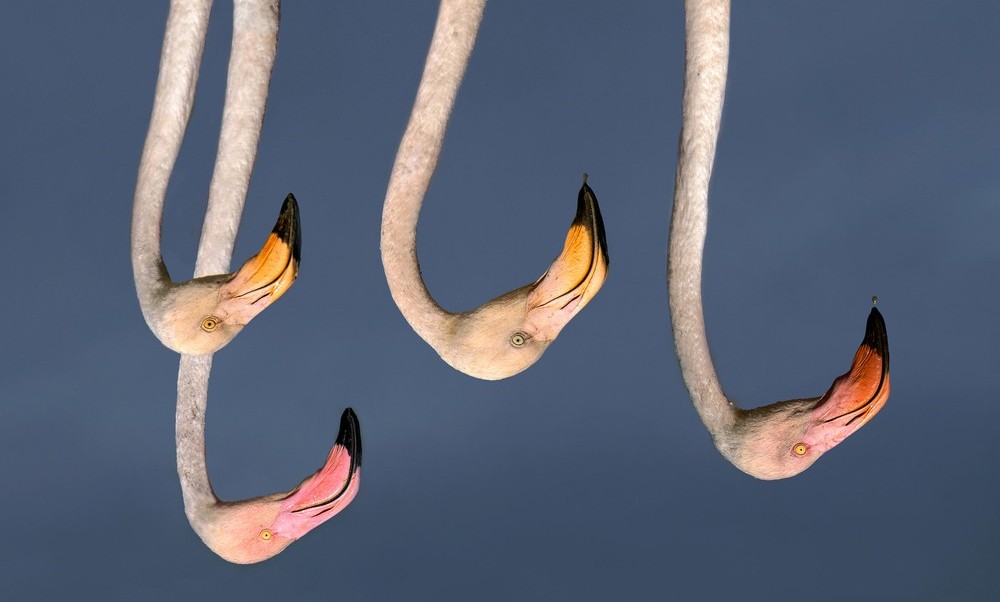 by Xavier Ortega (inverted with his permission).
by Xavier Ortega (inverted with his permission). |
 | Anette Ohlendorf PRO Thank you very much, a great compilation. |
 | Rae Zhang PRO Great collection of work! |
 | Roland Weber PRO A very nice story about an really overlooked item. Thanks for nice story and the brilliant photos.
My contratulation and again.. Chapeau!! |
 | Wanghan Li PRO Excellent works selected! Nice writing! Thanks a lot! |
 | Dazhi Cen PRO Creative and moody! |
 | Cicek Kiral CREW Great collection .... Congratulations... |
 | Biao Huang PRO Great ! |
 | Biao Huang PRO
;Great! |
 | Susan Beausang PRO A wonderfully written article with truly inspiring images. The photographs do an excellent job of highlighting the ideas behind using umbrellas as a compositional and storytelling element. Informative, creative, and a pleasure to read. |
 | Wonderful and inspiring collection of images. Lovely and elegant article, congratulations, Jane and Yvette! |
 | Izabella Végh PRO Un bellissimo articolo anche questo. Mi piace anche a me fotografare gli ombrelli. Qui a Venezia, dove le stradine sono così strette, certe volte difficilissimo camminare con gli ombrelli. Tanti anni fa, quando mi sono iscritta ad 1x.com, perché sulla rete ho trovato una fotografia, su questa e stata una scimmietta, sotto la pioggia, lei teneva sulla testa un foglio grande di palmo, come ombrello. Cerco ancora questa foto..... |
 | Lovely article and inspiring images!! Whimsy all wrapped up in history, iconography and wonder!! |
 | Thierry Dufour PRO Thank you Jane for selecting one of my images. Superb series. Congrats for your work !!! |
Tutorial led by Editor Michel Romaggi in collaboration with the author Tatsuya Moments
Edited and published by Yvette Depaepe, the 9th of December 2025
This photo was taken on a rainy evening in the city.
I was out walking with no particular destination in mind, simply enjoying the way the rain was softening the lights and reflections around me.
Then, when I noticed this woman standing quietly under her umbrella, illuminated by the blurred lights of passing cars and neon signs, I experienced a moment of stillness amidst the city's bustling rhythm.d this woman standing quietly under her umbrella, illuminated by blurred car lights and neon signs, I felt a moment of stillness in the middle of the city's rhythm.
‘Blue Silence’
My intention was not to document the person, but the atmosphere.
I wanted to capture the solitude and quiet strength, and the feeling of looking at the world through a thin veil of rain.
Equipment
• Camera: RICOH GR III
• Lens: Built-in 28mm equivalent
• Filters: None
• Tripod: Not used (handheld)
I started with a basic 'straight out of camera' file. It was during post-processing that the transformation occurred.
POST-PROCESSING (with Layer Breakdown)
My Editing Approach
The editing process is largely intuitive, driven by emotion rather than strict rules.
As I edit, I ask the image what it needs:
Softer highlights, deeper blues or more ambiguous textures, for example.
The final work becomes more than just a photograph of the moment;
but an interpretation of how that moment felt: silent, melancholic and dreamlike. The structure of the layers used in Photoshop is shown below, from bottom to top, and represents the actual workflow.
Post-Processing Workflow (with Visual Step-by-Step Screenshots)
Below is an overview of my editing process from step ① to ⑥, illustrated with actual screenshots from Photoshop.
These images show how each layer and effect transformed the photo as I built the final mood intuitively.
① Original Image — Base Composition
No major adjustments yet. Base composition only.
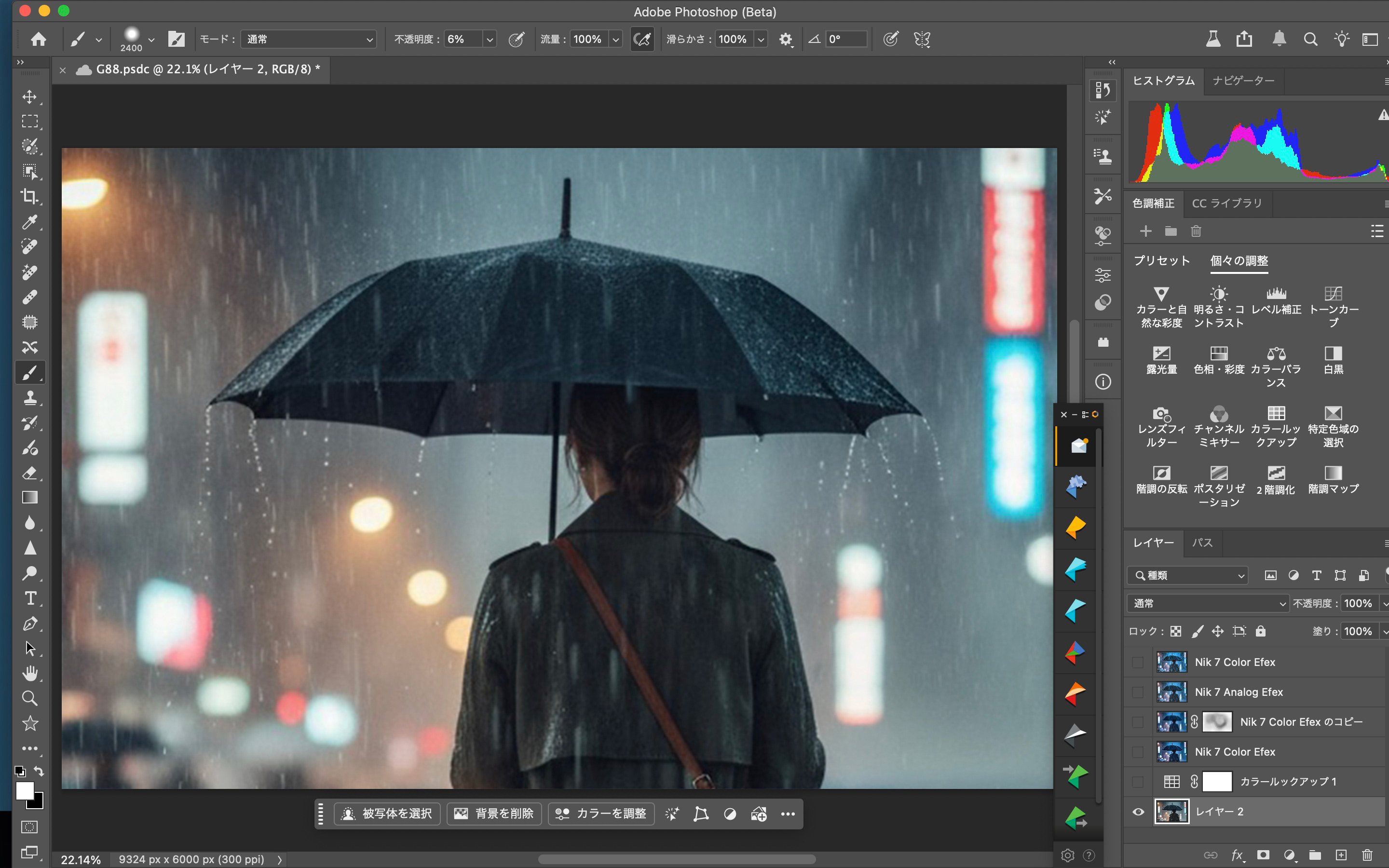
② Basic Color Setup — Photoshop + Color Look Up
At this stage, I applied a Color Look Up table to define the overall direction of the tones.
This creates the foundation of the cold, rainy atmosphere.
Brightness, contrast, and color balance were also lightly adjusted.
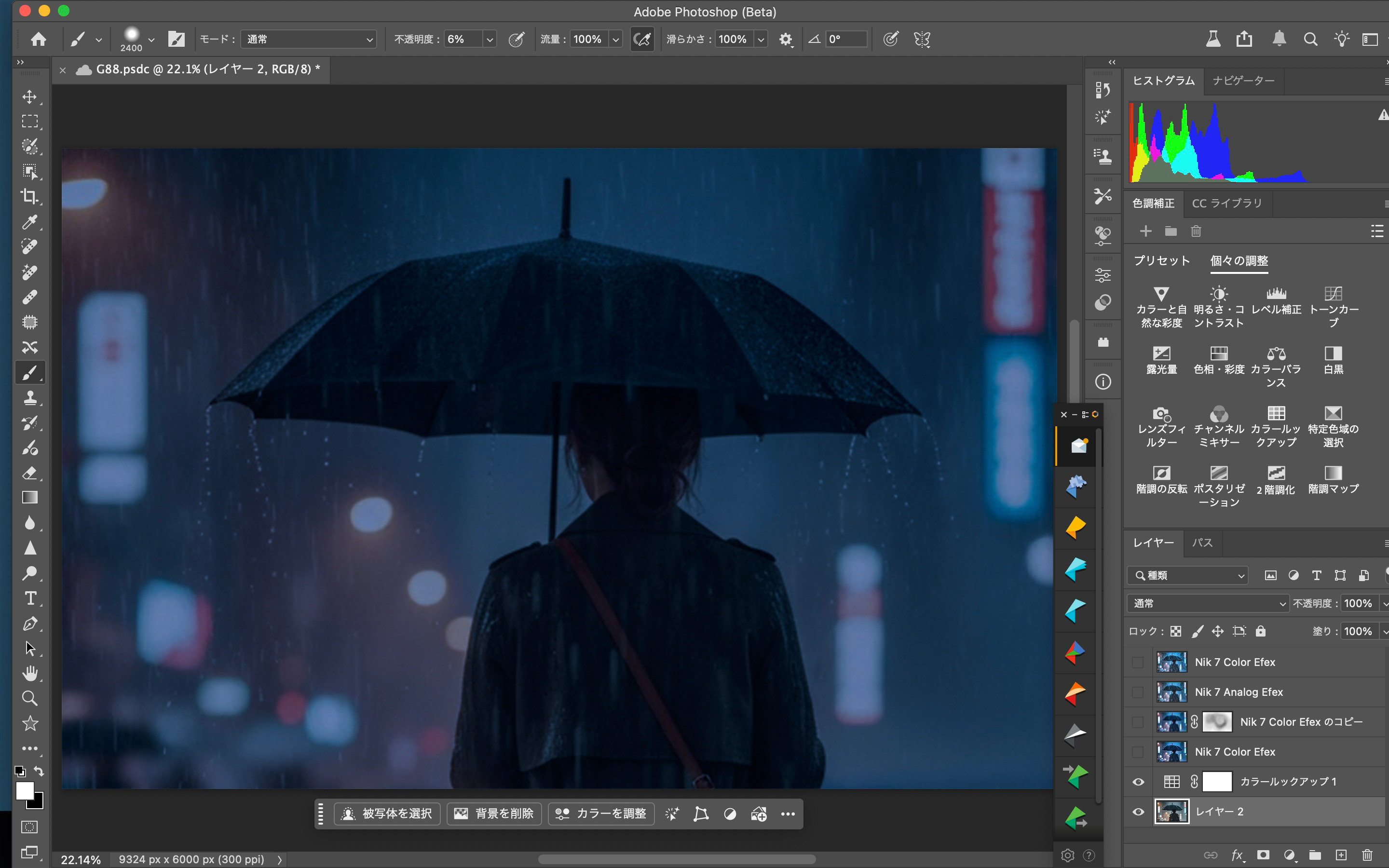
③ Nik 7 Color Efex — Establishing the Blue Mood
Using Nik Color Efex, I shaped the essential mood:
• softened highlights
• deepened the blues
• adjusted luminance and contrast
• clarified midtones
This step builds the emotional color base of the final image.
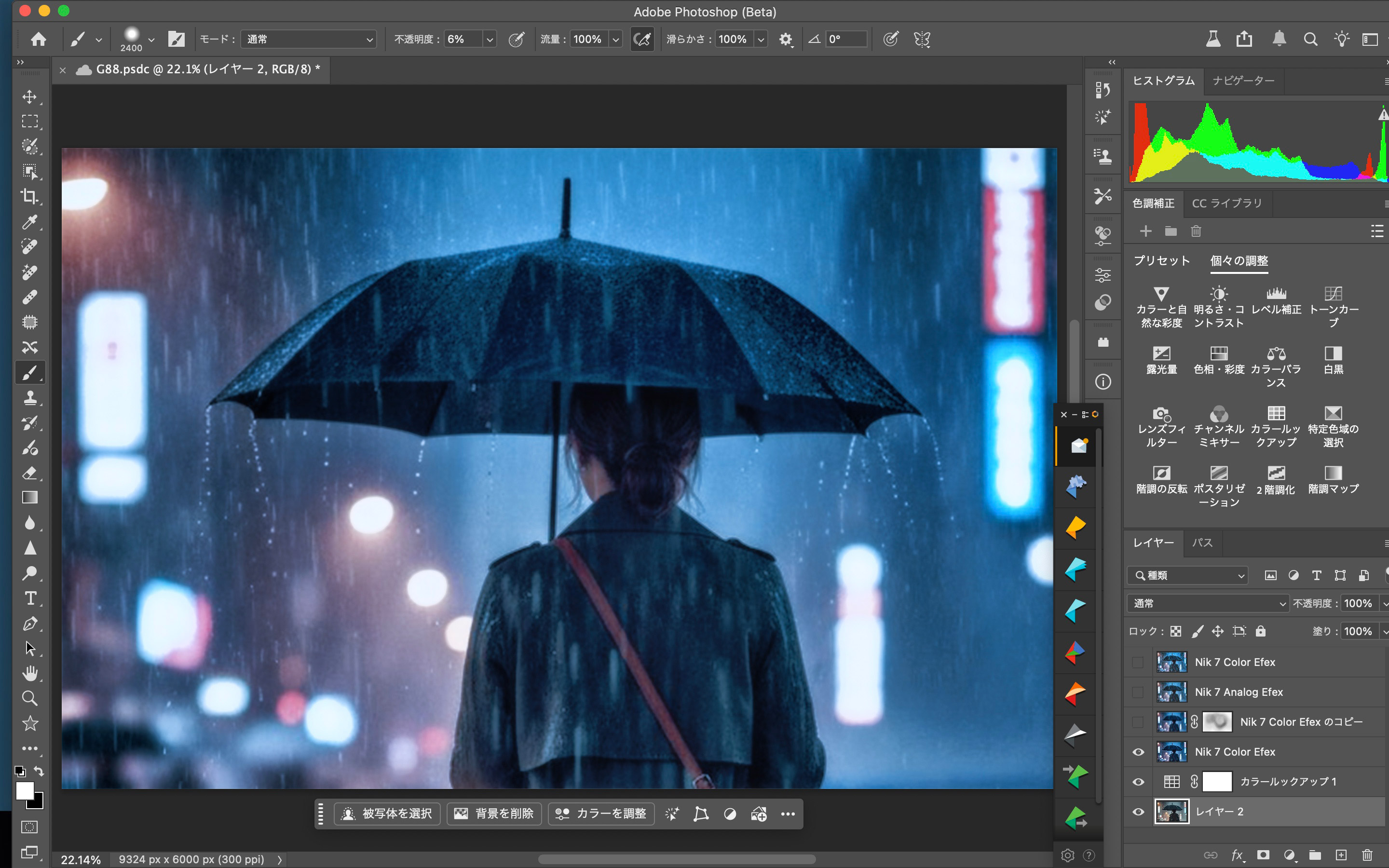
④ Duplicate Color Efex Layer — Motion Blur (~370)
I duplicated the previous Color Efex layer and added Motion Blur (approximately 370).
This enhances:
• the softness of background lights
• the smooth trails of rain
• the dreamy separation between subject and environment
A mask was used to control where the blur appears.
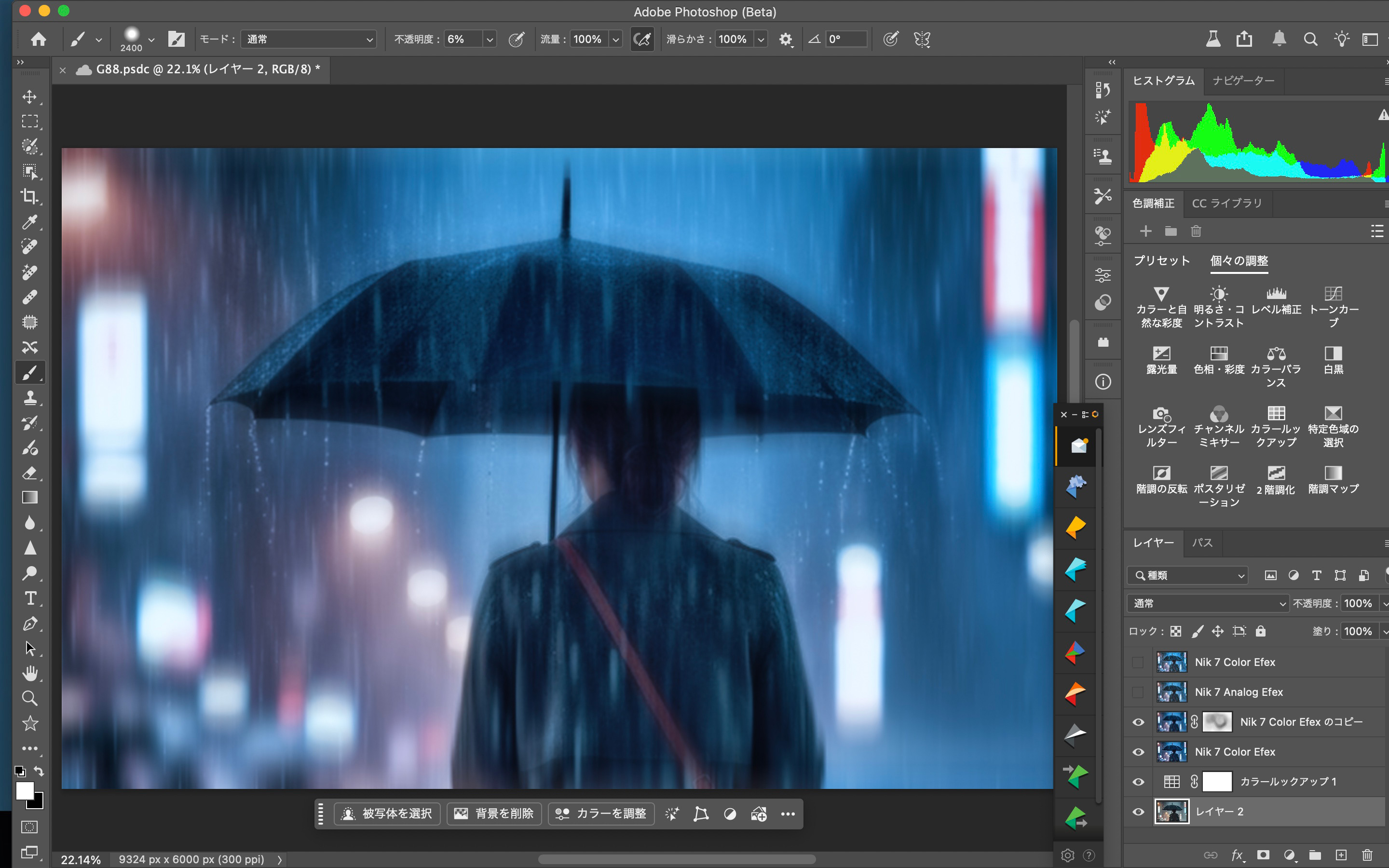
⑤ Nik 7 Analog Efex — Adding Textures & Imperfections
With Analog Efex, I added subtle layers of:
• scratches
• stains
• atmospheric haze
• film-like imperfections
These textures make the image feel like a memory seen through a wet, imperfect surface.
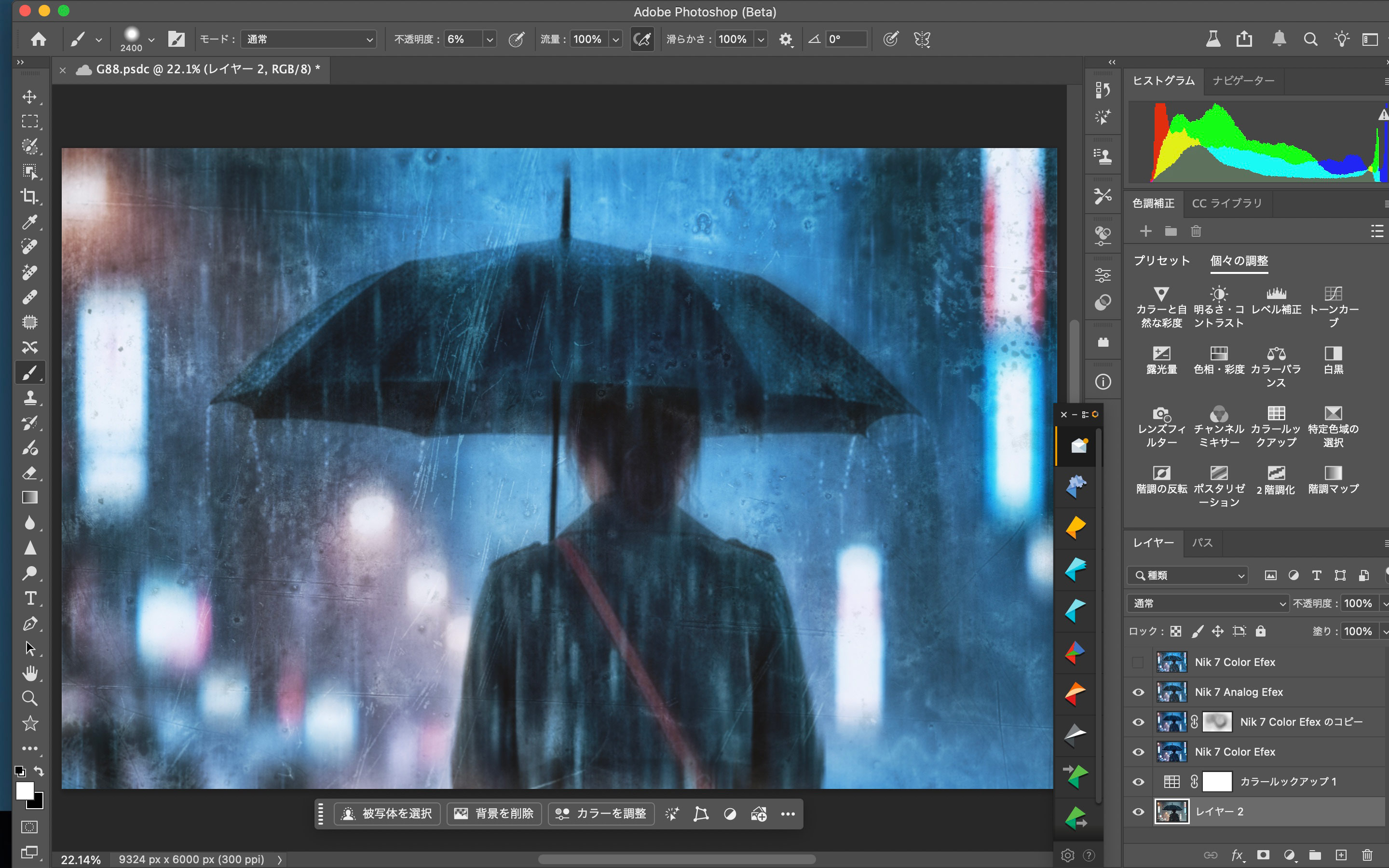
⑥ Final Adjustments — Nik Color Efex (Second Pass)
For the final polish, I returned again to Nik Color Efex, refining:
• saturation
• final blue tones
• contrast
• depth in shadows
This step brings cohesion and emotional depth to the whole image.
BIOGRAPHY
My name is Tatsuya, and I am a street and fine-art photographer based in Japan.
Photography began as a simple way to record daily life, but over time it became a language for expressing emotions that are difficult to put into words.
I am often drawn to themes such as rain, silence, and solitary figures—moments that hold a quiet story within them.
For me, a photograph is a small visual poem.
 |
 | joanaduenas PRO Impressive work, thanks for sharing your workflow. |
 | Chilsong Pak PRO Thank you for sharing. |
 | Thank you for sharing Tatsuya..for detail process in photoshop!! |
 | Leechee Z PRO Excellent !!!Thanks for sharing, Tatsuya. Thanks to 1X too. |
 | Thanks to Tatsuya, and to 1X.
|
 | Tracy Lee PRO Excellent work. Thanks for sharing the detail process. |
 | Cicek Kiral CREW Thanks a lot for your efforts. I like this a lot... |
 | Lynn Adams PRO Such a transformation, wow! Many kind thanks for sharing your insight and inspiration dear. A well deserved highlight! A lovely week ahead. |
 | Eiji Yamamoto PRO Thank you so much for sharing such an inspiring article! Congratulations! |
 | Miron Karlinsky PRO Thank you
|
 | UstinaGreen PRO Wonderful work with blue rein!
Fantastic light and tonality!
Many thanks for your presented! |
 | Excellent work, thanks for sharing! |
 | Excellent article! Thank you so much for sharing the image process in such detail. I think you successfully conveyed that immersive and mysterious atmosphere you envisioned from the beginning. Congratulations! |